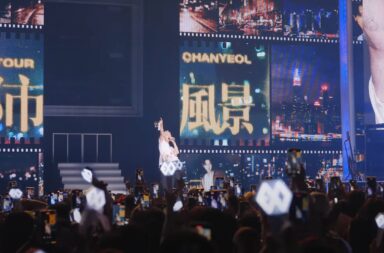“I learned to recognise the thorough and primitive duality of man … even if I could rightly be said to be either, it was only because I was radically both.”
Strange Case of Dr Jekyll and Mr Hyde
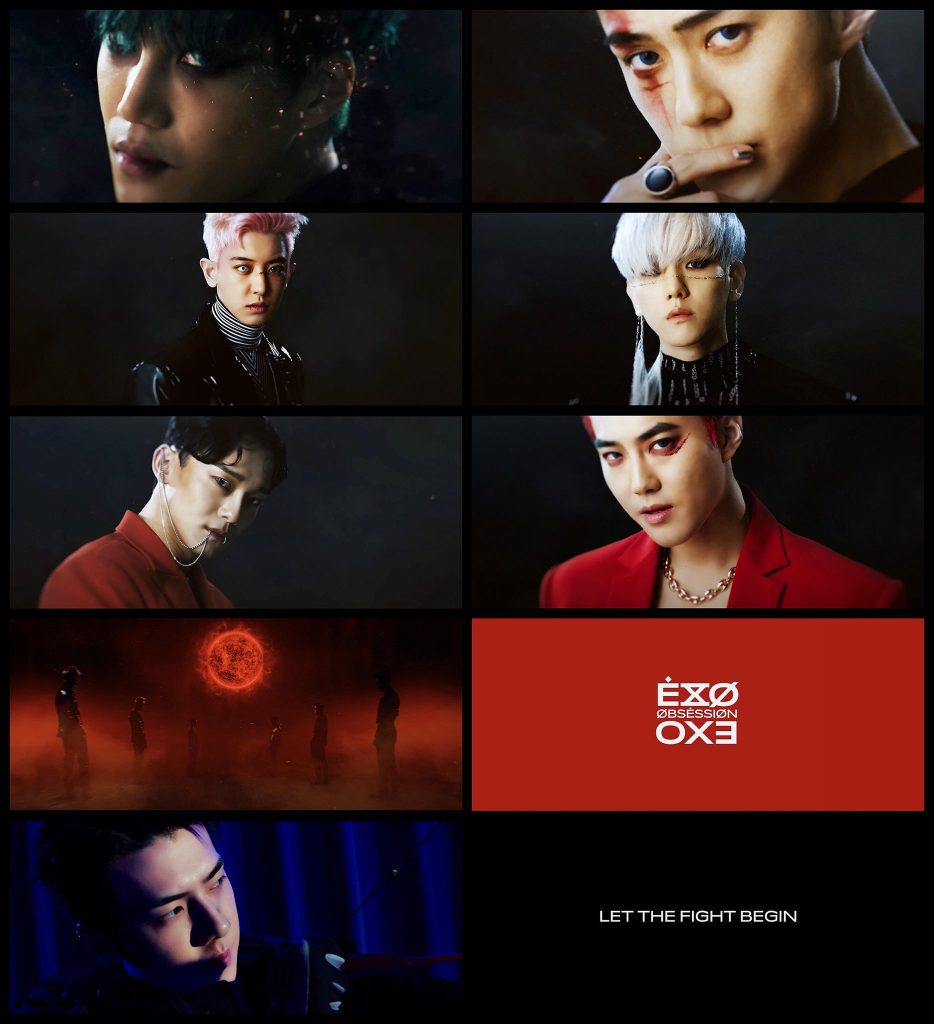
Exo are at war with themselves as part of the marketing campaign for their upcoming comeback on November 27. In a concept trailer released by SM Entertainment earlier this month called Exodeux, the six group members appeared highly stylized, with chain jewelry and dark makeup, between shots with imagery that hearkened back to the group’s previous videos and broader narrative universe. The trailer features the six active members of the group, but not quite – these versions of Exo have marked physical differences, from different colored eyes to eroded DNA.
The styling of the six active members, as themselves but distinctly not themselves, in conjunction with the video’s other visual elements, as well as inverted social media accounts (“Exo one are we”) shared by the group support the narrative twist that Exo have a group of evil clones, X-Exo. As the group’s sixth full-length album approaches release, fans have been encouraged to “vote” for either individual Exo members or their evil clones using the related social media accounts.
This particular iteration of Exo draws upon the group’s founding narrative while successfully repurposing industry comeback tactics and capitalizing on the group’s global social media presence. The use of interactive social media as a promotional tool highlights how such media is a tool in identity formation and empowers users to express their fan identities. When it comes to a battle between Exo and themselves, there is no better place for the fight to play out than on the social media stage.
Exodeux and the Making of Two Exos
Exo used similar interactive media during their Exodus comeback in 2015. During the comeback promotion, Exo released a series of individual teaser videos that featured riddles and clues. A separate PathcodeEXO Twitter account was opened to provide supplemental clues so that fans could solve puzzles that would provide access codes to unlock exclusive teaser photos on the SM website. The effectiveness of this promotional strategy is its alignment with the highly visual nature of K-pop multimedia performances, from stages to selfies. From another perspective, consumption and redistribution of this content is essential to maintaining one’s identity as a fan.
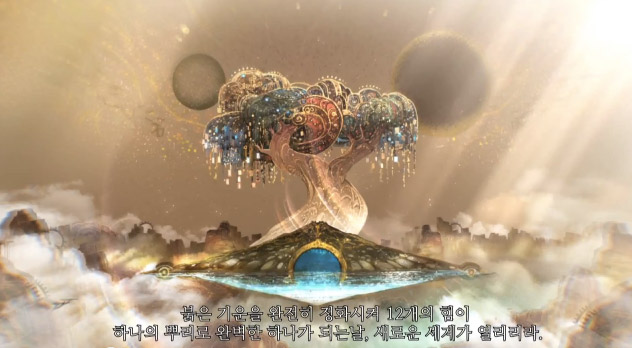
Another aspect of fan identity is the fan’s ability to understand the intertextuality of a group’s content. In other words, “true fans” perform this status by being knowledgeable about their favorite group’s members, characters, and body of work. When Exo debuted in 2011, the group was uniquely promoted with its own origin story: the original twelve members came from a planet outside the solar system, an exoplanet, and possessed individual superpowers that they used to protect the Tree of Life against their enemy, the red force. The ongoing battle between Exo and the red force has taken place across universes and timelines, and the introduction of X-Exo complicates this story further.
Building upon PathcodeEXO and previous teaser cycles, Exodeux develops Exo’s narrative universe in a way that engages fan knowledge. Fans were quick to develop theories that situated the Exodeux concept trailer into the story of Exo. The trailer features imagery that carries heavy symbolic weight in Exo lore. Centrally important to the Exo universe is the Tree of Life that has been used as an image as early as 2012 in the “Mama” music video and the group’s iconic “Wolf” choreography.
Another essential aspect of Exo’s narrative is their individual superpowers, which the group has wavered in its commitment to over time; the members’ powers are mostly related to elemental forces, with Chanyeol as fire, Suho as water, Baekhyun as light, Sehun as wind, Chen as thunder, and Xiumin, D.O., and Lay as frost, earth/strength, and healing accordingly. One popular theory dates the origin of the group’s powers to the “Lucky One” music video. The superpowers take the form of symbols on a stone, with the superpowers of active members glowing in orange and those who aren’t active (Xiumin, D.O., and Lay) present but not glowing.

The development of a complex narrative universe that relates to a group and informs everything from the group’s music to their merchandise is not a uniquely Exo phenomenon. By the same token, the involvement of fans with respect to the narrative is not exclusive to Exo-ls. Because of the highly visual, multimedia nature of the industry, groups are continuously reinventing themselves and necessarily promoting a new aesthetic with each comeback to demonstrate growth and maintain fan interest. In turn, fans can develop, post, and share their reactions to comeback content and thereby demonstrate their knowledge of their favorite group.
Nevertheless, Exodeux contributes a unique concept to the industry, as no other group has literally presented cloned versions of themselves as part of a comeback. The centrality of the evil clone theme to Exo’s comeback is apparent in the word “exodeux” used as the title for the Obsession concept trailer, with “deux” meaning two in French. As the guiding text for the group’s comeback, Exodeux marks an aesthetic and generic change from the group’s last comeback for the Love Shot repackage that can best be described as a descent into chaos, the trailer declaring, “a messy world order. Anomalies due to twisted world orbits.” Fans have already developed complex theories to explain how the clones fit into Exo lore, hypothesizing that past music videos might not even include “real” Exo, but their clones, based on such anomalies in space and time.
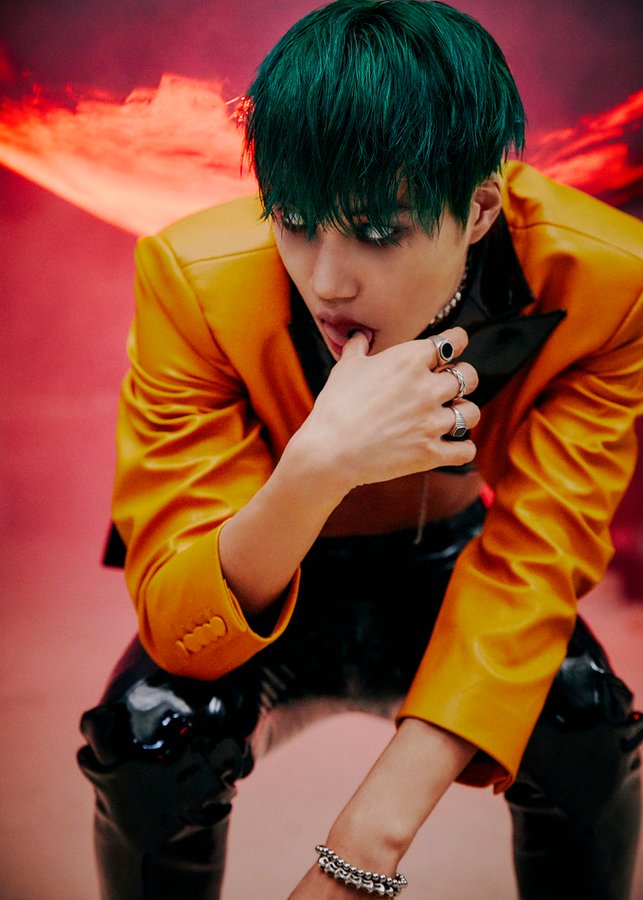
The aesthetic change is most apparent in the group’s shifted visual. X-Exo are identifiable by their symbolic physical difference, including heavy makeup, brightly colored contact lenses, faux bruising and scarring, and chain accessories. These adaptable features of a comeback, from fashion choices to hair and makeup, signal a group’s maturation between releases. The use of evil clones is a distinctive repurposing of a K-pop convention, as groups are expected to reinvent themselves every comeback. In particular, Exo’s use of such a shift speaks to their ability to adapt their overarching narrative and flex across aesthetic boundaries.
Let the Fight Begin: Polling Fan Preference
As the comeback approaches, fans are able to vote for their preference between members and their X-Exo clones. The likes and shares on posts featuring the Exo or X-Exo member result in the “unlocking” of extra content. The use of quotes here is because regardless of the results in aggregate likes and shares, extra content of both Exo and X-Exo members was shared.

Even so, this use of media draws upon fan desire to interact with their favorite group and can be understood as a version of fan production. Through interacting with the group’s content, fans are performing their fan identity by voting and sharing their preferences and contributing, however superficially, to the group’s future. This interaction is what separates the average person from the fan, for a fan, interaction with content intensifies emotional connections to a group: “For fans, emotional investments lead to active engagement with texts [content]” (Oh 2017).
The strong relationship between K-pop and social media interaction is undeniable. The partnership between multiple companies and Twitter for awards categories and voting reveals the importance of interactive engagements by fans of Korean music and television. In the larger context, the dominance of Korean acts on Billboard’s Social 50 chart in recent years reflects the influence of K-pop fans.
Still, the industry has only just begun to mine the potential of active fan engagement. While some groups opt for relatively straightforward comebacks, in which teaser content is released for fan reception, other groups have capitalized on the importance of fan engagement through social media.
For instance, BTS opened their Smeraldo Books account as part of the Love Yourself era. The account also featured a related shop, e-mail, blog, and Facebook page to which cryptic messages and excerpts were shared related to the wider Bangtan Universe. Smeraldo Books represents immersive media that also functions outside of comeback promotions. As part of the promotion period for their fourth extended play Al1 in 2017, Seventeen released teasers of individual members that included a specific number that unlocked that member’s teaser photo. Recently, IZ*ONE reopened their official website with a brand new interactive homepage that has functioned much like a coloring book across several of the group’s comebacks.
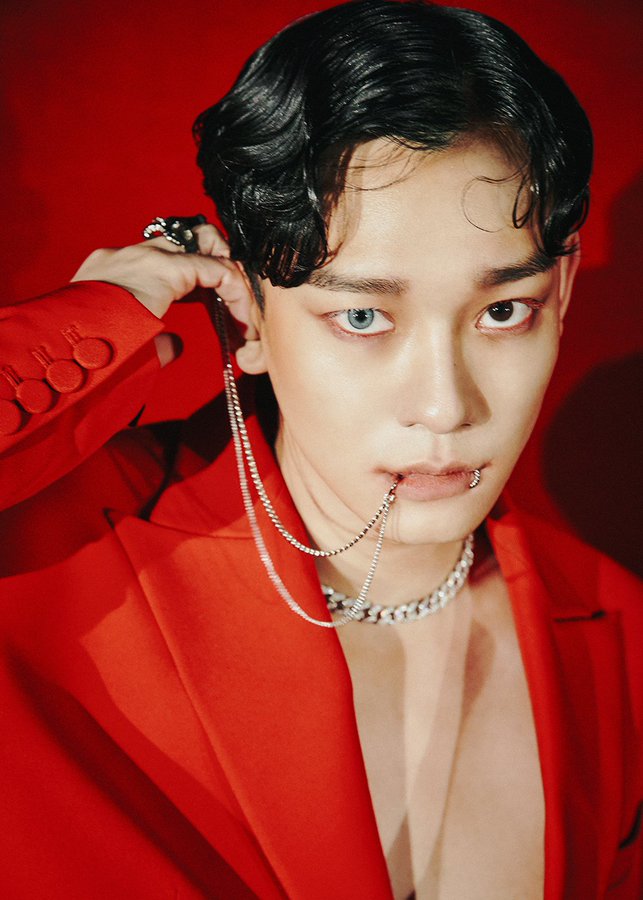
The decision to promote members individually, a common thread across K-pop comebacks, is a particularly effective way to capitalize on fan interest. On one hand, fans are able to support their bias individually. This alone is a form of active participation in K-pop communities (Oh 2017). On the other hand, fans are empowered to express their stylistic preference when it comes to their favorite member. Beyond simply liking photos of their bias, fan opinion results in exclusive content. In this way, fans are responsible for what content gets generated. This process of production is what marks a fan from an ordinary viewer (Oh 2017). By encouraging fan interaction in this and previous comebacks, Exo signal their understanding of how fans are made through content creation and interaction.
Being Both
Overall, the promotions for Exo’s upcoming release Obsession have foregrounded aesthetic change as a method for engagement with fans. The album features ten tracks and arrives eleven months after the Love Shot repackage. Musically, it is still unclear how the darker aesthetic will translate. The track 지킬 (Jekyll) will likely pay homage to the comeback’s theme, as its title nods to Robert Louis Stevenson’s famous novella Strange Case of Dr Jekyll and Mr Hyde.
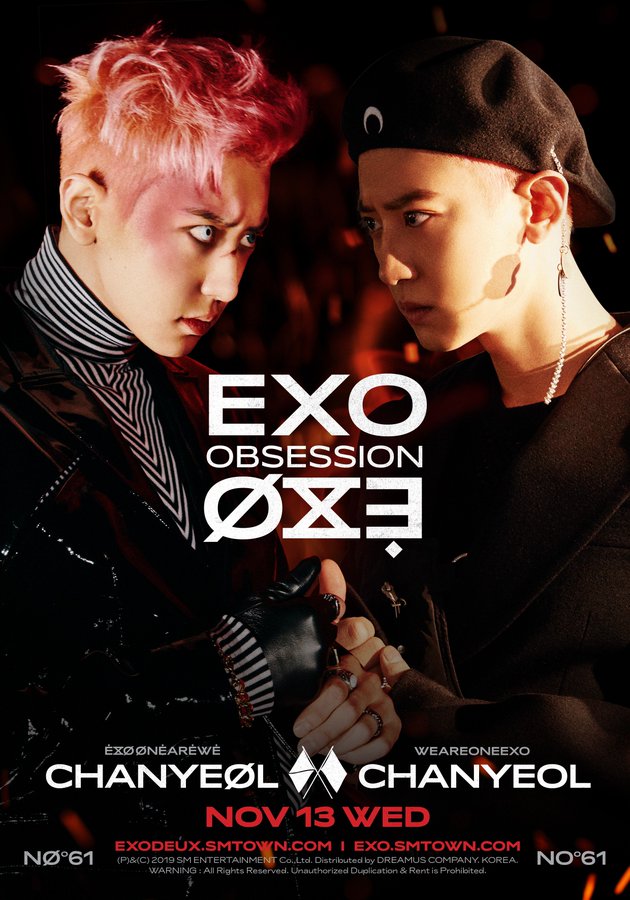
Visually, however, SM has tended to build Exo’s lore in teasers and concept pieces, but has failed to deliver the same level of intricacy in the “final” product. The best example of this is PathcodeEXO, during which fans’ detective work led to a lackluster “Call Me Baby” video that had little to do with the elaborate narrative set up by the teasers that preceded it. On the other hand, the group has successfully revisited its narrative and delivered on a storyline in the past, with “Lucky One” standing out as particularly effective. Considering the level of promotional build-up for Obsession, there is a real fear that the end result will fail to live up to its hype.
Fan reception of the promotional content thus far has been mostly positive. Despite the desire of Exo-ls for X-Exo to stimulate more interaction (likes and shares), the inverted accounts seem to only reach within the fandom based on numbers of followers. Equally important to keep in mind is the agency’s history with promotion and fan engagement that culminated in less than satisfactory releases. For this particular comeback to be successful, it will have to be as focused as ever in its thematic scope and effectively relate its aesthetic and conceptual changes to the Exo’s founding narrative. That being said, the group’s ability to be both Exo and X-Exo during promotions alone is a testament to the strength of their founding narrative and their adaptability as multimedia performers in a global market
(YouTube. Images via SM Entertainment. Oh, David C. “K-pop Fans React: Hybridity and the White Celebrity-Fan on Youtube.” International Journal of Communication. 11(2017), 2270-2287.)
